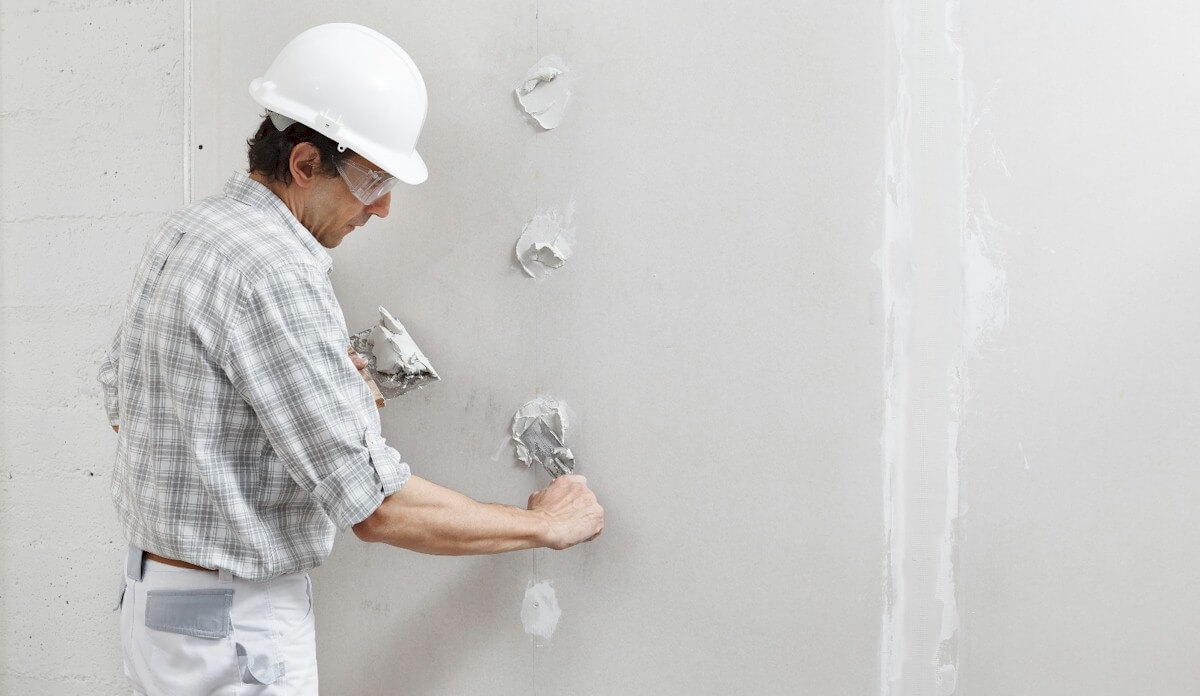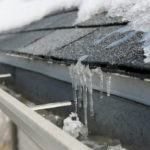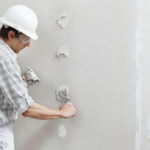
Here is the difference between drywall and plaster
Are you renovating your home or planning to build a new one? If so, one of the key decisions you’ll have to make is choosing between drywall and plaster for your walls and ceilings. While both materials serve the same purpose of creating a smooth and finished surface, there are some important differences to consider. This article will uncover the key differences between drywall and plaster, helping you make an informed decision for your project.
We’ll explore factors such as installation process, durability, cost, and aesthetic appeal. By the end, you’ll have a clear understanding of the pros and cons of each option, allowing you to choose the best material for your specific needs. Whether you’re a homeowner, contractor, or DIY enthusiast, this article is your comprehensive guide to understanding the differences between drywall and plaster. Let’s get started and make your decision-making process a whole lot easier!
Pros and Cons of Drywall
Drywall, or gypsum board or sheetrock, is a popular choice for modern construction. One of the main advantages of drywall is its ease of installation. Drywall panels are readily available at most home improvement stores and can be easily cut and attached to the framing of your walls. The installation process is relatively quick and straightforward, making it a preferred choice for contractors and DIY enthusiasts alike.
Another benefit of drywall is its cost-effectiveness. Drywall is generally less expensive than plaster, making it a budget-friendly option for homeowners. Additionally, the availability of drywall materials and the ease of installation contribute to lower labor costs. This affordability makes drywall a practical choice for large-scale projects or those on a tight budget.
However, there are also some drawbacks to consider regarding drywall. One of the main disadvantages is its durability. Drywall is more prone to damage from impacts, moisture, and fire than plaster. While there are fire-resistant drywall options available, they may not offer the same level of protection as plaster. Additionally, drywall can be easily dented or punctured, requiring repairs or replacement. If you have children or anticipate high-traffic areas, this vulnerability to damage may be a concern.
In terms of aesthetics, drywall offers a smooth and uniform finish that is popular in modern homes. It provides a blank canvas for painting and decorating, allowing for endless design possibilities. However, drywall may not be the best choice if you prefer a more textured or ornate look. While it is possible to create texture with drywall mud, it may not achieve the same level of intricacy as plaster. Overall, the pros of drywall include easy installation and affordability, but it may lack the durability and ornate finishes of plaster.
Pros and Cons of Plaster

Plaster, on the other hand, has been used for centuries and is known for its durability and timeless appeal. Made from a mixture of gypsum, sand, and water, plaster provides a solid and long-lasting finish for walls and ceilings. One of the main advantages of plaster is its ability to withstand impacts and resist damage. Unlike drywall, which can easily be dented or punctured, plaster offers a more robust surface less prone to wear and tear. This durability makes plaster an excellent choice for high-traffic areas or homes with children or pets.
Another benefit of plaster is its fire-resistant properties. Plaster is inherently fire-resistant, providing an additional layer of protection for your home. In the event of a fire, plaster can help contain the spread and minimize damage. This fire resistance sets plaster apart from the drywall. It can be a significant factor to consider, especially for those living in areas prone to wildfires or seeking added peace of mind.
While plaster offers durability and fire resistance, there are some downsides to remember.
One of the main disadvantages is the installation process, which is more labor-intensive and time-consuming compared to drywall. Plaster requires skilled craftsmanship to apply and finish, including multiple layers of plaster and careful sanding to achieve a smooth surface. This intricate process can be challenging for DIY enthusiasts and may require hiring professional plasterers, adding to the overall cost of the project.
Speaking of cost, plaster is generally more expensive than drywall. The materials themselves, as well as the labor involved, contribute to the higher price tag. Additionally, the availability of skilled plasterers may vary depending on your location, which can further impact the cost. While plaster may be a pricier option upfront, it’s durability and timeless appeal can add value to your home in the long run.
Regarding aesthetics, plaster offers a unique and elegant look that is difficult to replicate with drywall. The smooth, seamless finish of plaster creates a sense of craftsmanship and can enhance the overall aesthetic of a room. Furthermore, plaster can be molded and sculpted into intricate designs and textures, allowing for a customized and artistic touch. If you appreciate the charm and character of older homes, plaster may be the perfect choice for creating a classic and sophisticated atmosphere.
Cost Comparison between Drywall and Plaster
When it comes to cost, drywall is generally the more affordable option. The materials themselves, including drywall panels, joint compound, and tape, are readily available at most home improvement stores at a reasonable price. Additionally, the installation process is quicker and requires less skill, reducing labor costs. In total, the cost of drywall installation is typically lower compared to plaster.
Conversely, plaster is generally more expensive due to the materials used and the labor involved. Plaster requires a skilled plasterer to apply and finish the layers, which adds to the overall cost. Additionally, the materials used in plaster, such as gypsum, sand, and water, may be more expensive than drywall panels. The intricate installation process and the need for specialized skills contribute to the higher price tag of plaster.
It’s important to consider your budget and the specific needs of your project when deciding between drywall and plaster. If cost is a significant factor, drywall may be the more practical choice. However, if you value durability and timeless appeal over immediate cost savings, plaster may be worth the investment.
Installation Process of Drywall and Plaster

The installation process of drywall and plaster differs significantly, both in terms of ease and skill required. As mentioned earlier, Drywall is relatively straightforward to install and requires minimal expertise. The process involves:
– Measuring and cutting the drywall panels to fit the desired dimensions.
– Attaching them to the wall studs or ceiling joists.
– Finishing the joints with joint compound and tape.
While some DIY experience may be beneficial, drywall installation can be accomplished by most homeowners with the right tools and resources.
Plaster, on the other hand, requires a higher level of skill and craftsmanship. The process begins with applying a scratch coat, followed by a brown coat, and finally, a finish coat. Each layer needs to be carefully applied and smoothed out to create a seamless surface. Additionally, the plaster needs time to dry and cure between each coat, which can prolong the installation process. This intricate process is best left to professional plasterers, especially for larger or more complex projects.
While drywall can be installed relatively quickly, plaster installation takes longer due to the required multiple layers and drying time. If time is a critical factor in your project, drywall may be the more practical choice. However, if you have the patience and appreciate the artistry of plaster, the installation process can be a rewarding experience.
Durability and Maintenance of Drywall and Plaster
Durability is an essential factor to consider when choosing between drywall and plaster. Drywall, while easier to install, is more susceptible to damage from impacts, moisture, and fire. Drywall panels can be easily dented or punctured, requiring repairs or replacement.
Additionally, moisture can cause the drywall to warp or mold, making it less suitable for areas prone to high humidity or water exposure.
In contrast, plaster offers greater durability and resistance to damage. Plaster surfaces are more robust and less prone to dents and punctures.
The solid composition of plaster makes it better equipped to withstand impacts and wear and tear. Additionally, plaster is inherently fire-resistant, providing an additional layer of protection for your home.
Maintenance for both drywall and plaster is relatively straightforward. For drywall, regular cleaning and dusting keep the surface looking fresh and free of debris.
Repairs can be made using joint compound and tape, and repainting can be done as needed. Maintenance involves periodic dusting and cleaning for plaster to maintain its smooth finish. If minor cracks appear, they can be repaired using a plaster patching compound. Overall, both drywall and plaster require minimal maintenance, with plaster offering a more durable and long-lasting option.
Soundproofing and Insulation Properties of Drywall and Plaster
In addition to creating a finished surface, both drywall and plaster offer some soundproofing and insulation properties. Drywall, especially in multiple layers, can help reduce noise transmission between rooms. The air pockets between the layers of drywall act as a barrier, absorbing and dampening sound vibrations. However, it’s important to note that while drywall can provide some soundproofing, it may not be as effective as specialized soundproofing materials or techniques.
Plaster, on the other hand, offers better soundproofing properties compared to drywall. The dense composition of plaster helps to absorb and block sound vibrations, resulting in a quieter and more peaceful environment. Additionally, plaster can also provide some insulation benefits by reducing heat transfer. The thermal mass of plaster helps to regulate temperature fluctuations, keeping your home cooler in the summer and warmer in the winter. If soundproofing and insulation are important factors for your project, plaster may offer a better solution.
Aesthetics and Finishes of Drywall and Plaster
When it comes to aesthetics, both drywall and plaster offer unique finishes that can enhance the overall look of your home, drywall provides a smooth and uniform surface that is popular in modern homes. The seamless finish of drywall allows for endless design possibilities, with the option to paint, wallpaper, or apply decorative finishes. However, drywall does not offer the same textural variety or ornate finishes as plaster.
Conversely, Plaster offers a distinct and elegant look that is difficult to replicate with other materials. The smooth, seamless finish of plaster creates a sense of craftsmanship and adds character to a room. Additionally, plaster can be molded and sculpted into intricate designs and textures, providing a unique and customized look. Whether you prefer a smooth finish or desire a more textured and ornate look, plaster offers a wide range of options for achieving your desired aesthetic.
When considering the aesthetics of drywall and plaster, it’s essential to think about the overall style and atmosphere you want to create in your home. If you prefer a sleek and modern look, drywall may be the better choice. However, if you appreciate the charm and character of older homes or desire a more customized and artistic look, plaster may be the ideal option.
Environmental Impact of Drywall and Plaster
Sustainability and environmental impact are increasingly important considerations in construction and home improvement projects. When comparing drywall and plaster, it’s essential to consider their environmental implications.
Drywall, made primarily of gypsum, is a naturally occurring mineral widely available. Gypsum is a non-toxic and recyclable material, making drywall a relatively environmentally friendly option. However, it’s important to note that the manufacturing process of drywall involves energy consumption and emissions. Additionally, the disposal of drywall waste can pose environmental challenges, as it may contain additives and contaminants.
Conversely, Plaster has a longer history of use and is considered a more sustainable option. Plaster is made from natural materials such as gypsum, sand, and water without synthetic additives or chemicals. This natural composition makes plaster a greener choice compared to drywall. Additionally, plaster can be easily repaired and maintained, reducing the need for replacement and waste generation.
When considering the environmental impact of drywall and plaster, it’s important to weigh the overall life cycle of the materials, including manufacturing, installation, use, and disposal. While both options have sustainability advantages, plaster generally offers a more environmentally friendly choice.
Which is Better: Drywall or Plaster?
Choosing between drywall and plaster ultimately depends on your specific needs and priorities. Drywall is a practical choice for those seeking affordability, ease of installation, and a smooth finish. It is suitable for modern homes and projects with budget constraints. However, it may not offer the same level of durability, fire resistance, or ornate finishes as plaster.
Conversely, plaster offers superior durability, timeless appeal, and a wide range of design possibilities. It is a suitable choice for those seeking a more elegant and customized look, with added benefits such as fire resistance and better soundproofing. However, plaster is more expensive, requires skilled craftsmanship for installation, and may not be as readily available as drywall materials.
Ultimately, the best choice between drywall and plaster depends on your unique circumstances, budget, and aesthetic preferences. It’s important to weigh the pros and cons of each material and consider factors such as durability, installation process, cost, and environmental impact. Consult with professionals, gather quotes, and assess your project requirements to make an informed decision.
Conclusion
In conclusion, choosing between drywall and plaster is a significant decision that can impact your home’s overall look, durability, and functionality. While drywall offers easy installation, affordability, and a smooth finish, plaster provides superior durability, timeless appeal, and a wider range of design possibilities. When deciding, consider factors such as cost, installation process, durability, aesthetic appeal, and environmental impact.
Whether you choose drywall or plaster, it’s important to consult with professionals, gather multiple quotes, and assess your specific project requirements. By doing so, you can ensure that you make an informed decision that meets your needs and preferences. Remember, your choice of wall and ceiling materials is a long-term investment in your home, so it’s worth taking the time to carefully evaluate your options. Happy renovating!



